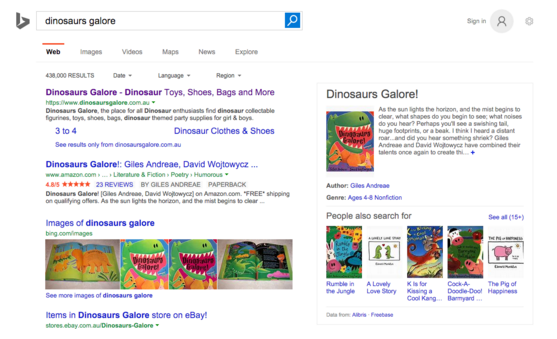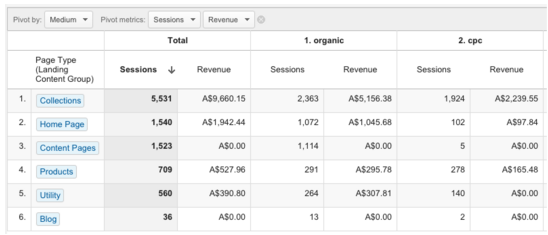Measuring the business benefits of search engine optimisation

There are many articles on how to optimise your website for search engines but few explain the business benefits. In this article I hope to provide you with a better understanding of why you should consider investing in SEO.
My company doesn’t sell SEO services, instead we focus on using data to grow businesses. As such I don’t have a vested interest in selling you SEO services. Rather I would like to share what I see from our clients and to illustrate the principles with examples from another business that I own with my wife called Dinosaurs Galore. This is a small online retail store that sells dinosaur themed toys and gifts. We have owned this for around two years and it is just starting to grow.
While I am using an example of a very small site everything discussed in this article is applicable to businesses of any scale. Most of our customer base is much larger well known brands and the issues they face are very similar.
The investment in search engine optimisation typically requires a significant investment of time and money and it can be difficult to determine what the return on this investment will be. In most cases search engine optimisation involves:
- Reviewing and fine tuning the site to ensure that there are no major barriers to ranking,
- Identifying keywords that you want to rank against,
- Adding or modifying content to attract audiences based on these keywords, and
- Establishing links to the site.
Each of these tasks are laborious and require specialist knowledge and skills. Further even once the task has been completed the search engine landscape is competitive and always changing. So you can’t treat this as a single once off project but you need to monitor it over time.
So how you you estimate the benefits in undertaking search engine optimisation?
I recommend you look at the following:
- The incremental lift in traffic and sales comparative to what you would get with little or no action,
- The cost of attracting the same lift via other channels such as paid search and social media advertising, and
- The longer term value of how you can retain visitors who have arrived via SEO.
I will cover these in three separate articles with this being the first.
Incremental gains
Determining the likely incremental gains for search engine optimisation is quite difficult to do.
There are broadly two types of keywords that your site will rank against:
- Your brand or company name, and
- Other keywords that may be product or concept related.
Naturally there are many different smaller categories that we could use but let’s keep things as simple as possible at this point.
Your brand
First up it is almost certain that your site will rank for your business name in one of the top places in Google, Bing or other search engines. Assuming that the search engine can find your site this will probably happen with little or no effort. So either no credit or very little credit should be given to any changes to rankings for your company name for your SEO efforts.
There is however good argument to say that increases in the frequency of searches for your company or brand name can be tied to efforts in other non-brand related SEO. This is a byproduct of people becoming more familiar with your brand as they become more familiar with it. For the purposes of making the business case for SEO however, this is very difficult to estimate and should be treated as a windfall rather than the direct benefit.

Other keywords
This is where the hard work of SEO lies. To get rankings for more general keywords is competitive and takes time and effort. This is where you need to measure the value of your SEO investment.
Unfortunately Google and other search engines only provide you with very limited details on which keywords your site is ranking against and this makes it difficult to measure the gains and losses in your SEO program. Further your SEO agency or consultant is probably measuring their success in the number of first page rankings or links added to the website. More sophisticated agencies measure revenue from SEO but I am yet to meet any who break this down in a meaningful way.
Regardless of your Search Engine Ranking Positions (SERPs) or the number of links your site has unless a visitor clicks on the link and visits your site it is wasted effort. So you need to measure success based on what the visitor does, not what they might do.
One effective way of measuring the success of SEO is to track the types of content that your visitors are visiting from search engines.
An online retail store has a number of key content types that include:
- The home page,
- Product category or listing pages,
- Product detail pages,
- Content pages, and
- Utility pages (checkout, terms and conditions, etc).
There are many others but for the purpose of this article these will do.
Your SEO plan should include setting expectations on what you anticipate should happen to each of these major page groups. For instance your home page should be boosted for keywords relating to your general offerings. With Dinosaurs Galore we aim to have our home page rank for keywords such as “dinosaur toys”, “dinosaur bags” and other general terms. Product category pages should aim to rank against more specific keywords such as “dinosaur jigsaw puzzles” and individual product pages against the name of the product that is being sold.
The report below shows you the revenue that is generated from each of the major page groupings on the Dinosaurs Galore website. This report was created in Google Analytics and needs a bit of work and forethought to set up. We will cover how to do this in a later article. For the moment the thing to note is that you can see that the revenue from this report is attributed mostly to the investment in product category pages (Collections) on the website. Looking at the column labeled “1. Organic” we can see that most of this comes from our SEO efforts.

This report also indicates that content pages such as our free printable birthday cards while they are attracting users they are not converting to sales. These need further work and actions that we are taking is to use remarketing and encouraging these visitors to sign up to our newsletter to gain future sales.
Once we get the data into this format we can then start to track how changes to our site performance occur over time.
The chart below shows how revenue and sessions can be seen for SEO traffic to the home page for the home page of the site over time.

This chart shows that there has been a decline in both number of sessions and in sales in the period following Christmas. Our future efforts in SEO will use this data as baseline against which we can measure our success over time.
Comment Manually
You must be logged in to post a comment.

No comments